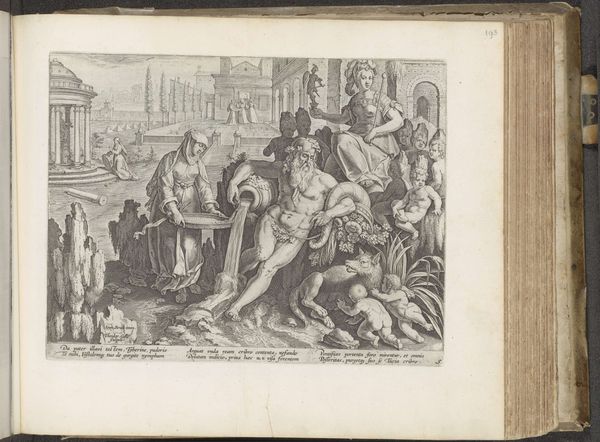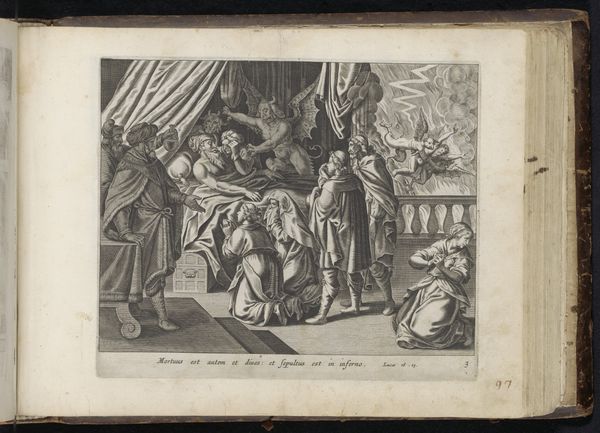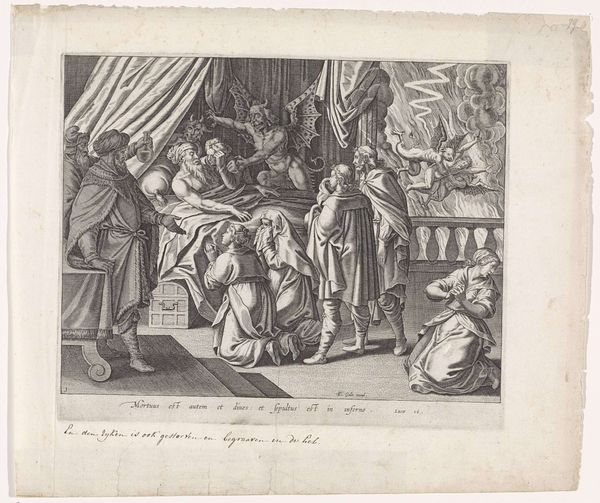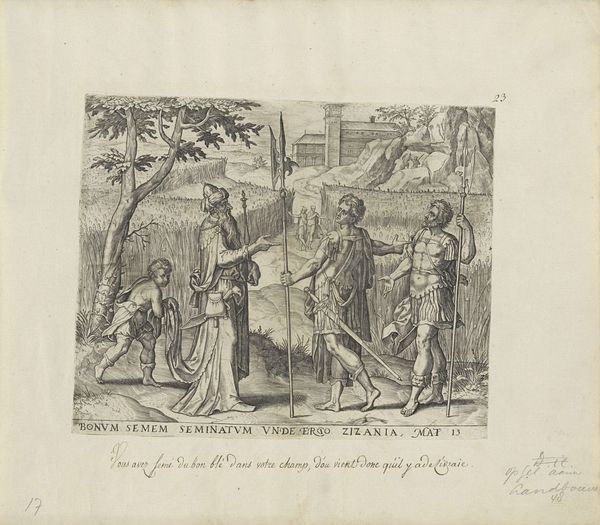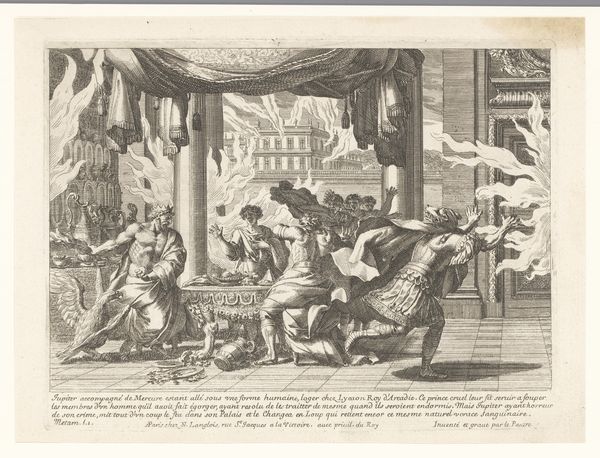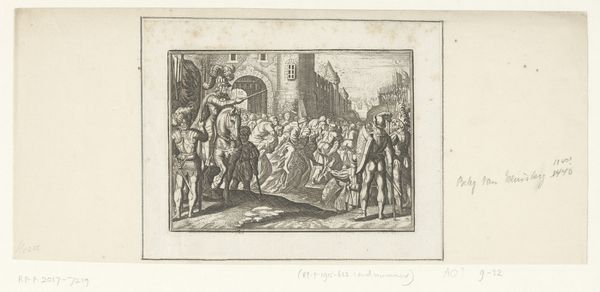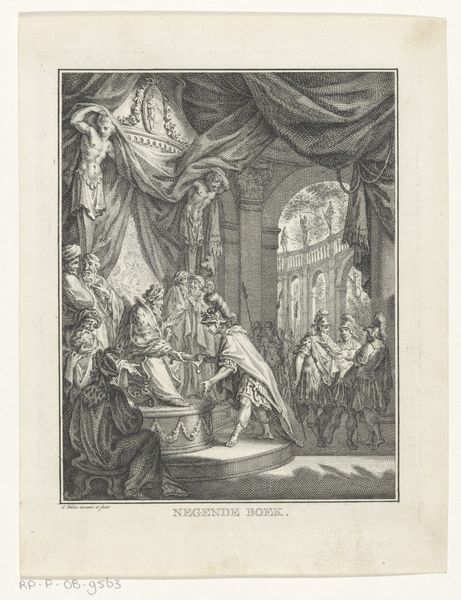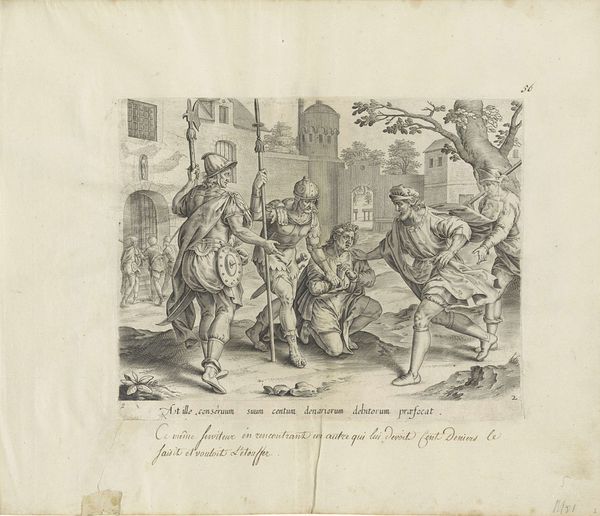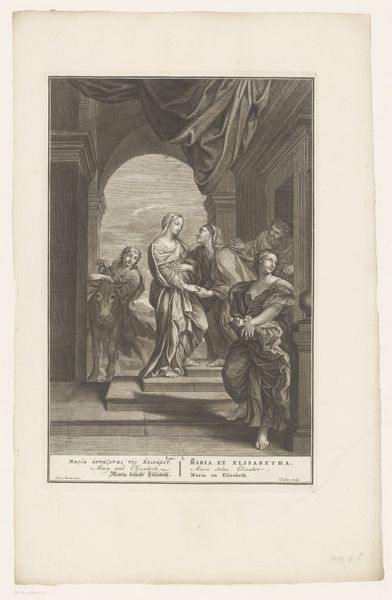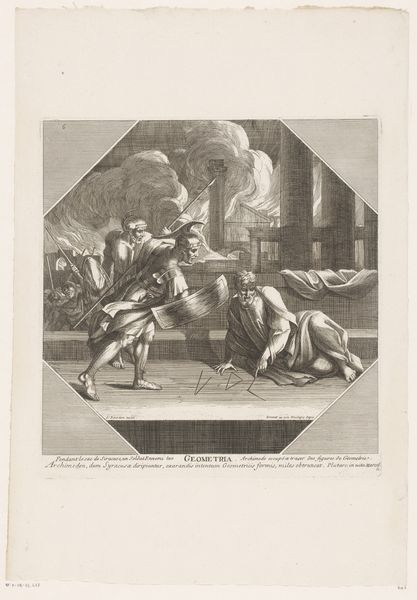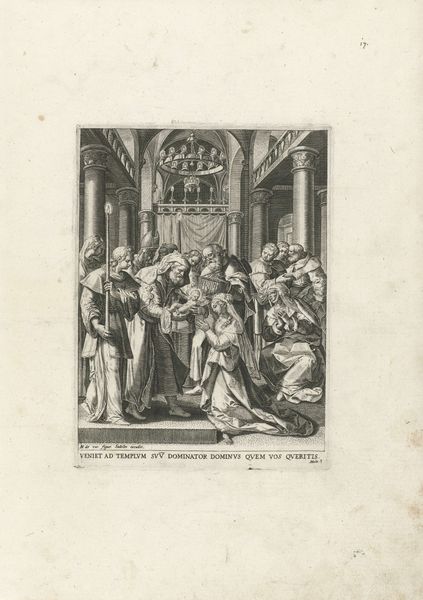
print, engraving
# print
#
landscape
#
figuration
#
history-painting
#
northern-renaissance
#
engraving
Dimensions: height 200 mm, width 228 mm
Copyright: Rijks Museum: Open Domain
Editor: This engraving, "Return of the Prodigal Son" by Philips Galle, dating from between 1547 and 1612, has such a dramatic feel. I’m immediately struck by the father's intense embrace of his son against this detailed, almost theatrical, backdrop. What stands out to you in this piece? Curator: For me, the print's historical context really shapes its meaning. Galle created this within a society deeply engaged with religious and moral narratives. Prints like these were widely distributed, influencing public perceptions and serving as visual aids for biblical literacy. Consider how the artist positions the family reunion, not just as a personal event, but also against a landscape dotted with details – a fountain, laborers, feasting – all contributing to a moral lesson about forgiveness and societal roles. It makes you wonder about how the imagery served the cultural values of the time. What aspects of society do you think the image promoted or challenged? Editor: I see what you mean! I was so focused on the central figures, I hadn't really thought about the broader implications. Maybe it reinforces existing social hierarchies by showing a clear distinction between those who work and those who feast, while also underscoring the importance of family and religious redemption? Curator: Precisely! The prodigal son’s return also speaks to how public shaming and social re-acceptance were navigated in early modern Europe. Art like this engraving helped disseminate and negotiate those complex social codes. Editor: That's a completely new perspective for me! Seeing it now as a socio-political document changes my understanding entirely. Curator: That's the fascinating thing about historical context, isn't it? It unveils deeper levels of meaning and reveals art’s engagement within the culture of its time.
Comments
No comments
Be the first to comment and join the conversation on the ultimate creative platform.
